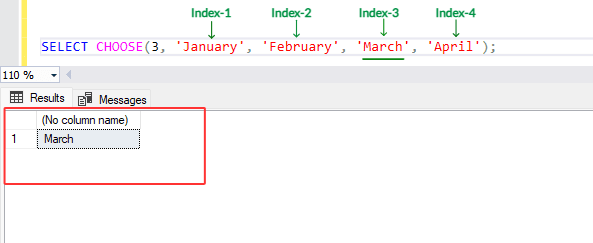Text copied!
CHOOSE function
In SQL, the CHOOSE function allows you to select and return a value from a list of values based on a specified index
The CHOOSE function in SQL Server helps you pick a specific value from a list of options. You just tell it which position in the list you want, and it gives you the value at that spot. It's like choosing a candy from a box by saying which number candy you want.
The syntax of the CHOOSE function generally looks like this :
CHOOSE (index, value1, value2, value3, ..., valueN)
• index: The position of the option you want to choose.
• value1, value2, value3, ..., valueN: The list of options to choose from. These could be values, columns, or expressions.
Here's an example of how you might use the CHOOSE function :
1. Consider a list of values comprising January, February, March, and April.
2. Let's assume you want to get the value at position 3.
3. Run below SQL statement :
SELECT CHOOSE(3, 'January', 'February', 'March', 'April');
4. In this example, This query would return 'March' because it selects the value at the third index.
